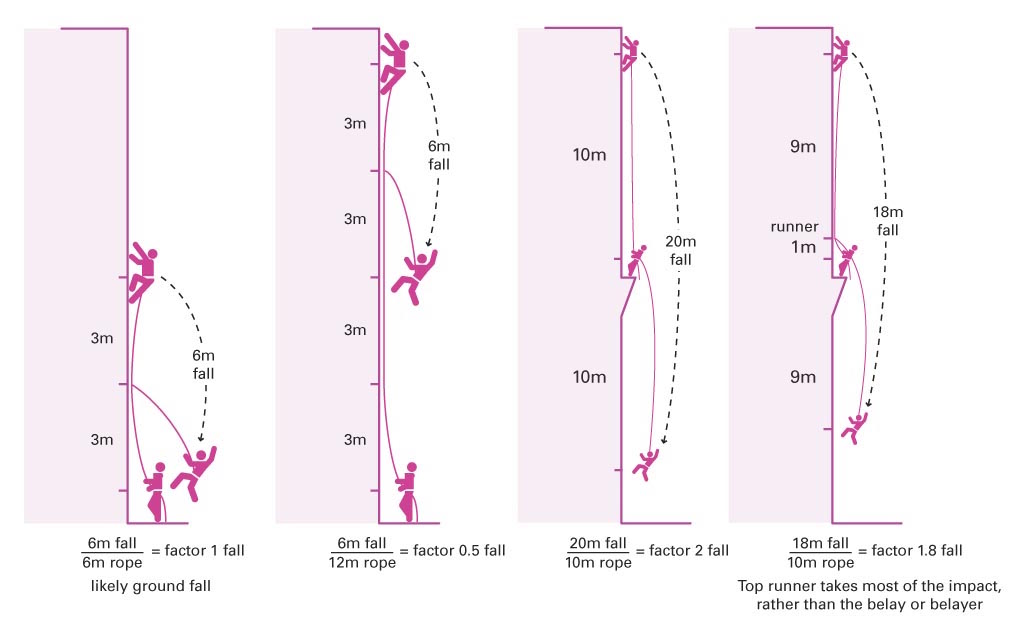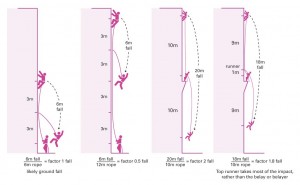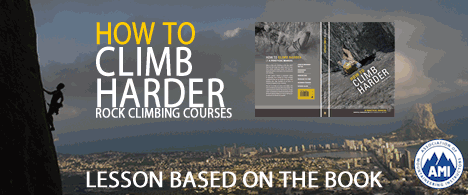Fall Factors are a simplified way to look at the impacts that you are likely to experience if you take a lead fall. They are a ratio of the length of potential fall versus the length of rope out.
This means that a short fall low down will produce a greater impact force than a longer fall at the very top of a long pitch.
Why these fall factors are important is that it allows us to understand the forces that may occur if we are to fall. They are also good to explain what can happen when multi pitch climbing in terms of the factor two fall.
Fall Factors – Factor two Falls
These are only possible on multi-pitch climbs. A fall factor being the length of fall in relation to the length of rope available to absorb the energy created by the fall. Whilst not an exact science is does help indicate the types of force that will be exerted on climber and belayer.
It is only when we leave the stance above the first pitch of a multi-pitch route that we have the potential for a factor two fall. Imagine climbing up four metres from the stance without any gear. The resulting fall will lead to the climber passing the belayer and falling for a total of 8 metres, with only 4 metres of rope out. As well as the highest impact force possible in a climbing fall you are also applying all that force to the belay, and potentially causing catastrophic failure.To avoid this even a runner next to the belay will help reduce the fall factor and protect the belay from the impact.
More than this though the belayers reaction is to lock the rope downwards as this is how you would generally lock off a lead climber. However as there are no runners in, when the climber passes the belayer they are now technically being top roped, and the way to lock of a top rope climber is to have the rope come back up towards the anchors.
This usually means Factor 2 Falls are much worse because the belaying drops the climber usually because the belay bad burns the skin on there hands. Sometimes the leader tries to grab the live rope rather than the dead rope as well as the rope very rapidly pills up on the belay ledge at their feet.
Warning – Avoid Factor Two falls at all cost. Place an early runner to protect the belay and the belay. (See the two right hand diagrams above). The runner at 1m means the belay is protected, the belayer has to lock off downwards as they will instinctively do when belaying a lead climber and the fall factor is reduce to 1.8, not good but much more survivable.
Trad Climbing Course
Our intro to trad climbing course are a great way to get to know loads about basic trad belays. You’ll also get a load of chance to make them yourself under the watchful eye of our coaches, before you belay off them.
We will also touch on fall factors and how they effect you on the multi pitch routes you will be climbing on the course.
eMail us to find out more.


